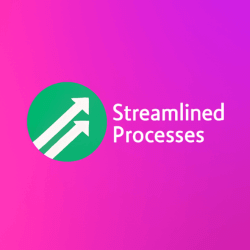For Automated Marketing Tactics, see our main page here.
What Are Automated Marketing Tactics?
Automated Marketing Tactics are marketing activities performed using software and tools without constant human intervention. These methods streamline repetitive tasks like email campaigns, social media posts, or lead nurturing workflows. In short, automation saves time while improving engagement and efficiency.
Most importantly, automation frees marketers to focus on strategy and storytelling instead of manual tasks. With tools like HubSpot, ActiveCampaign, or Mailchimp, businesses can consistently connect with the right audience at the right time.
Why Businesses Depend on Automation Today
Marketing has evolved dramatically in the past decade. Previously, campaigns were manually triggered and required weekly check-ins. Now, businesses face enormous content demands and fast-paced customer expectations. As a result, Automated Marketing Tactics have become essential for scalability and personalization.
Furthermore, with AI-driven algorithms and real-time analytics, automation strategies can adapt quickly. This allows brands to stay relevant and drive results consistently. For small businesses especially, marketing automation levels the playing field with larger competitors.
Key Types of Automated Marketing Tactics
Not all automation is created equal. Tactics vary depending on platform, budget, and customer journey stage. Below are the most common types used today:
- Email Automation: Send personalized welcome sequences, cart reminders, or re-engagement series automatically.
- Social Media Scheduling: Tools like Buffer and Later allow you to schedule weeks of content at once.
- Lead Scoring: Score and segment leads based on behavior to trigger custom marketing workflows.
- Chatbots and Conversational AI: Automatically respond to user queries and capture contact info.
- Dynamic Content Insertion: Change web or email content based on user behavior, location, or interests.
How Automated Marketing Tactics Enhance Personalization
Firstly, personalization goes beyond using someone’s name in an email. Automated Marketing Tactics build detailed customer profiles using data from past behavior, preferences, and interactions. This enables marketers to tailor experiences in real time.
For example, Netflix uses automated analytics to recommend personalized shows. Similarly, e-commerce sites like Amazon display user-specific product offers based on browsing history. These best-in-class examples show how automation supports scalable personalization.
Case Study: Automated Email Campaign Boosts Conversions by 200%
One outdoor gear company used an automated birthday email sequence combined with special discounts. Before automation, they sent these manually—and often forgot. After implementing a simple workflow in Klaviyo, their birthday campaign generated a 200% increase in sales from this touchpoint alone. Consequently, the team reimagined other campaigns, including post-purchase surveys and abandoned cart sequences, all relying on Strategic Automated Marketing Tactics.
Challenges and Common Mistakes to Avoid
While automation increases efficiency, it’s not a “set-it-and-forget-it” model. Poorly managed automation can lead to over-messaging or irrelevant content. Below are pitfalls to watch for:
- Lack of Segmentation: Sending the same message to everyone leads to lower engagement.
- Outdated Workflows: Regularly review and update sequences for accuracy and relevance.
- Spam Triggers: Too many messages or improper timing can send emails straight to spam folders.
- No Human Oversight: Always review what the platform is sending out. Customize where needed.
In other words, automation requires attention and refinement. When done thoughtfully, it significantly boosts long-term results.
Choosing the Right Tools for Marketing Automation
Not every tool fits every business. Therefore, selecting the right platform requires understanding your goals, team capabilities, and current tech stack. Below is a comparison of leading solutions, based on budget and functionality.
- HubSpot: Best for businesses needing an all-in-one CRM + marketing automation platform.
- Mailchimp: Excellent for email-focused efforts, especially small businesses just starting.
- ActiveCampaign: Great for advanced automation workflows and smart segmentation features.
- Zapier: Ideal for connecting different apps and automating even micro-tasks like spreadsheet updates.
In conclusion, align your tool selection with your growth path. Most platforms offer trials, so test before committing.
Automated Marketing Tactics in 2024 and Beyond
Technology is evolving fast—and so is marketing. In 2024, we’re seeing a shift toward intelligent automation. AI and machine learning now guide when to send messages, what content to show, and how to allocate budgets in real time.
Moreover, voice search optimization, chatbot marketing, and predictive analytics are becoming part of mainstream automation. Businesses that embrace these trends will likely outperform late adopters.
Implementing Automated Tactics: A Step-by-Step Approach
For many, getting started is the hardest part. Here’s a simplified approach:
- Map the Customer Journey: Identify key interaction points and decision stages.
- Audit Existing Content: Optimize or reuse emails, blogs, or lead magnets.
- Choose a Platform: Pick one based on features and ease of use.
- Build Basic Flows: Start with welcome emails or re-engagement sequences.
- Test and Optimize: Monitor results weekly and improve performance gradually.
Small wins build momentum. Don’t try to automate everything at once. Start with processes that create the most time savings or improve lead quality fastest.
FAQ: Common Questions About Automated Marketing Tactics
Q: How long does it take to set up marketing automation?
A: It depends. For simple email sequences, setup can take a few hours. Complex systems with CRM integration may take weeks.
Q: Will automation replace human marketers?
A: Not entirely. While automation handles tasks, creative thinking, storytelling, and strategy remain human-driven.
Q: What’s the biggest benefit of using Automated Marketing Tactics?
A: Consistency. Automation ensures your brand stays top of mind without daily manual work.
Q: Can automation improve team productivity?
A: Absolutely. It removes redundant tasks, reduces error, and allows teams to focus on growth.
The Bottom Line on Scaling With Smart Automation
Automated Marketing Tactics aren’t just about convenience—they’re about smarter decision-making and deeper engagement. Used wisely, automation transforms how brands build lasting relationships with their customers.
This article was created with the assistance of AI tools and reviewed by our team at Streamlined Processes LLC to ensure accuracy and relevance.
Follow us on Facebook here.

